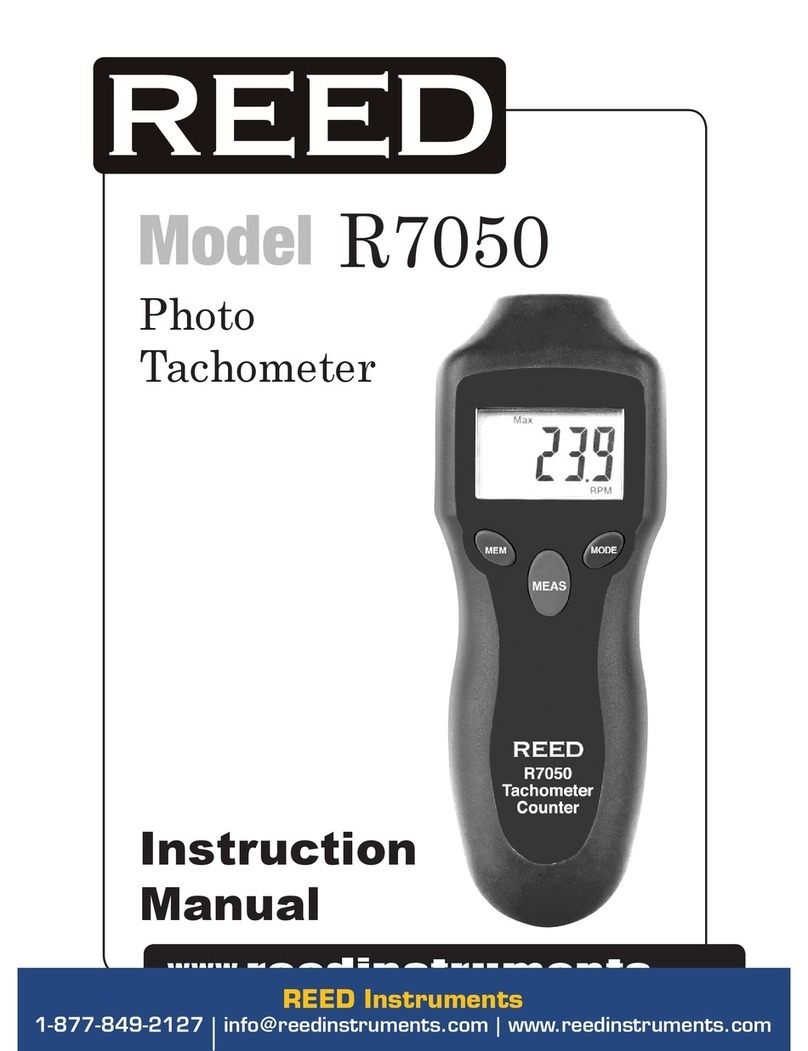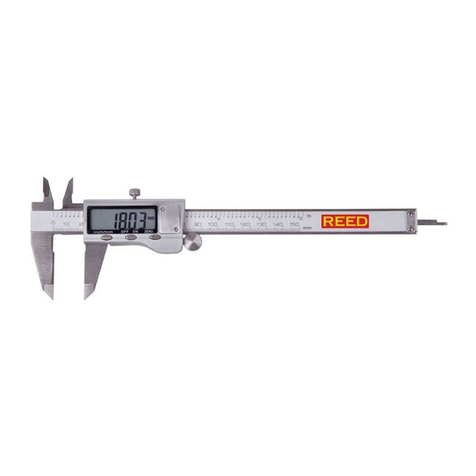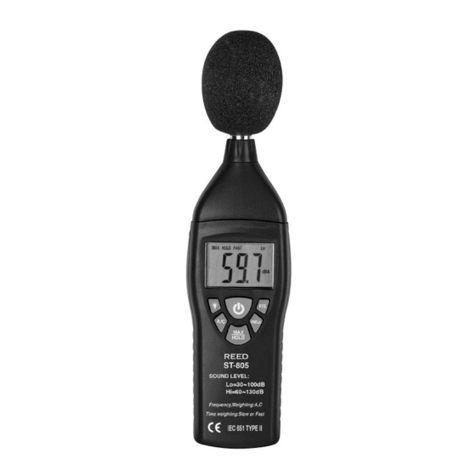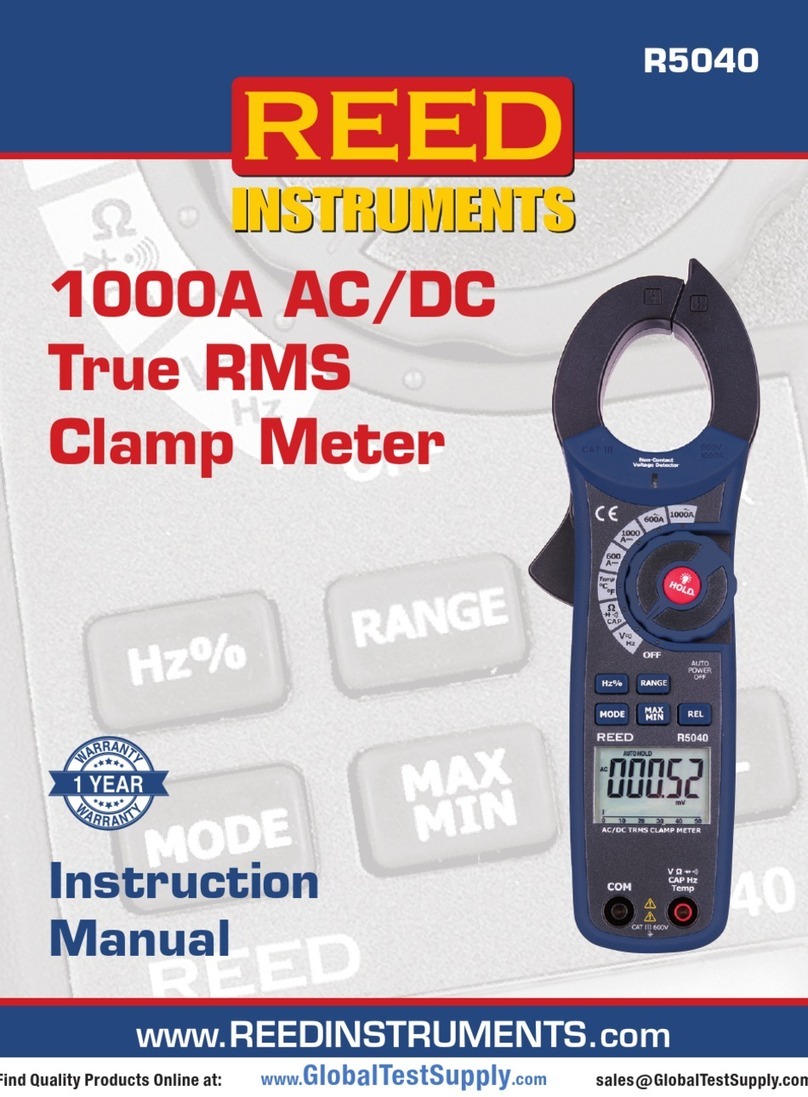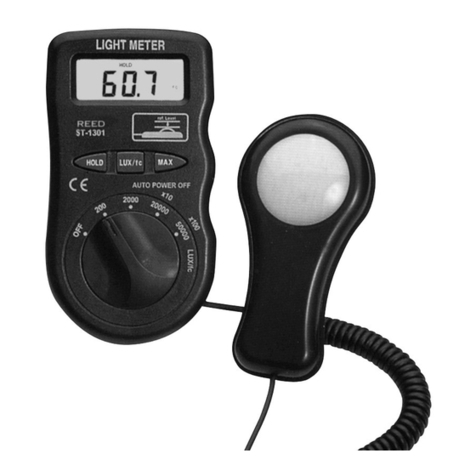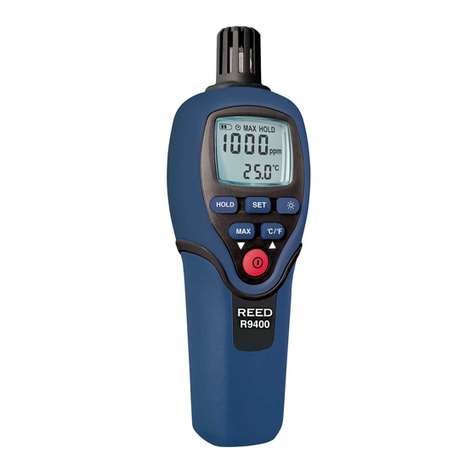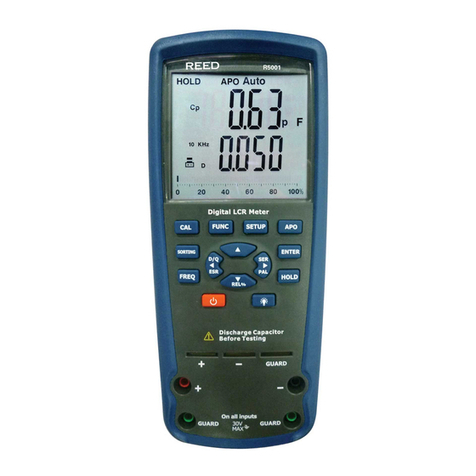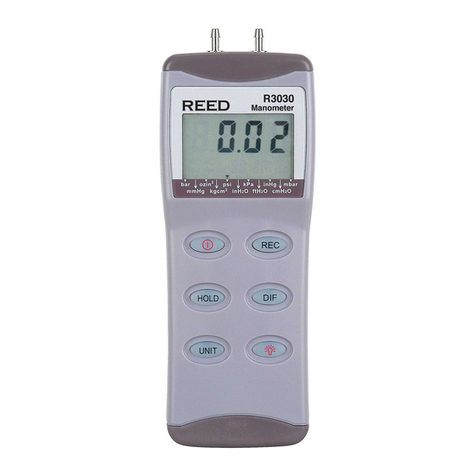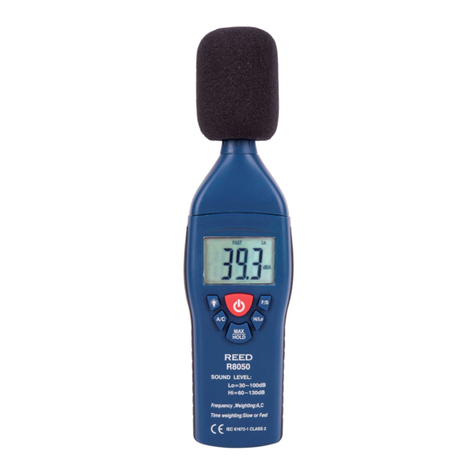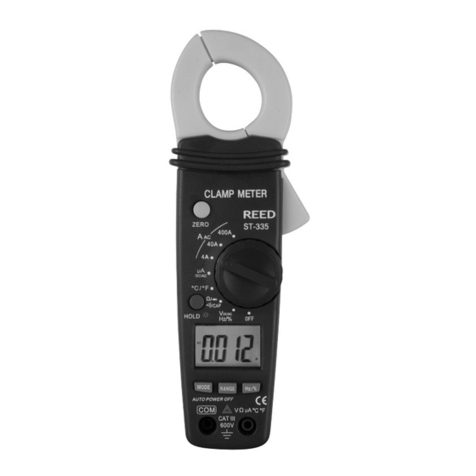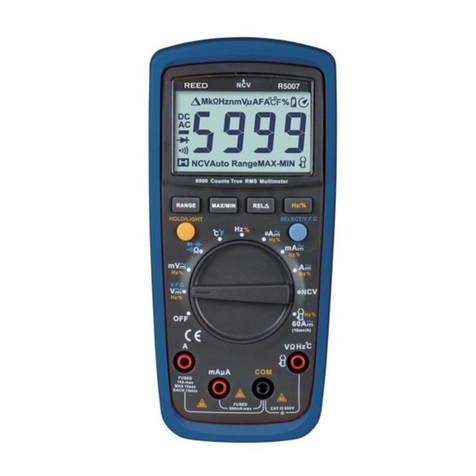reedinstruments
www com
9
Operating Precautions
1. When wind is blowing across the microphone, this will bring additional
extraneous noise. When using the instrument in the presence of wind,
use the windscreen (included) to not pick up undesirable signals and
provide a more accurate measurement.
2.
For the most accurate measurement, use an extension cable to separate the
microphone from the main body to eliminate unexpected sound reections.
3. Calibrate the instrument before operation if the instrument was not in
use for a long time or operated at bad environment (see page 8).
4. Do not store or operate the instrument in high temperature or high
humidity environments.
5. Keep the microphone dry and avoid severe vibrations.
6. When the meter is not in use, take the battery out and keep the
instrument in a low humidity environment.
Measurement Procedures
1. Open battery cover on the back of the meter and install a 9-volt battery
in the battery compartment.
2. Turn the power on and select the desired response time and weight-
ing. If the sound source consists of short bursts or if it’s only catching
sound peaks, set the response to FAST. To measure the average sound,
use the SLOW setting. Select A-weighting for general noise sound level
and C-weighting for measuring sound level of acoustic material.
3. Select your desired Level
4. Hold the instrument comfortably in your hand or install it on a tripod
(REED Model BS-6) and point the microphone at the noise source, the
sound pressure level will now be displayed.
5. When MAX (maximum hold) mode is chosen, the instrument captures
and holds the maximum noise level for a long period using any of the
time weightings and ranges.
6. When HOLD (data hold) mode is chosen, the hold function freezes the
reading on the display. Press the HOLD button momentarily to activate
or to exit the HOLD function.
7. Turn off the meter. When the meter is not in use, take the battery out
and keep the instrument in a low humidity environment.













